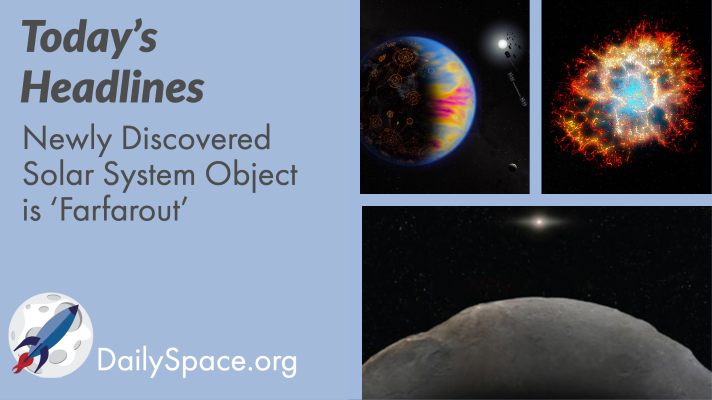
Feb 17, 2021 | Astrobiology, Daily Space, ESA, Exoplanets, Galaxies, KBOs, Mars, Nebulae, Sky Watching
A newly found object nearly four times farther out from the Sun than Pluto now holds the record for the farthest observed in our solar system. Plus, forming super-Earths, finding potentially habitable planets, jellyfish galaxies, the Crab Nebula, and this week’s What’s Up.

Feb 11, 2021 | Comets, Daily Space, Mars, Mars 2020, Random Space Fact, Space China, Space History, Spacecraft, SpaceX, Starlink
Join us for this week’s Rocket Roundup with host Annie Wilson as we look back at the launches that happened over the last week, including Yet Another Starlink and a surprise Chinese launch. Plus, updates on all those arriving Mars missions.

Feb 11, 2021 | Cassini, Climate Change, Daily Space, Earth, Galaxies, Mars, OSIRIS-REx, Saturn, Stars
Scientists collected fresh data on Orion’s bright star Betelgeuse to try and understand this star that caused so much controversy last year. They found it’s smaller than previously calculated, and last year’s dimming was likely caused by dust, but it’s also more complex than thought. Plus, galaxies, Earth’s forests, ice on Mars, and Saturn’s moon Rhea.

Feb 8, 2021 | Climate Change, Earth, Galaxies, Mars, Neutron Stars / Pulsars, Sky Watching, Stars
A new theory has been proposed that could answer the question of what causes recurring landslides on Mars: small-scale ice melting just below the surface may leave the regolith vulnerable to wind. Plus, a look at some of Earth’s ancient climate changes, a gamma-ray source, puffy galaxies, and this week’s What’s Up.

Feb 3, 2021 | Daily Space, Dark Matter, Galaxies, Guest Interview, JAXA, Jupiter, Mars, Neutron Stars / Pulsars, Stars
A radio-loud magnetar first observed in March 2020 suffered an apparent identity crisis, behaving like a pulsar until gradually settling into magnetar-like emissions in July. Plus, Mars’ moon Phobos, Jupiter’s moon Ganymede, and an interview with SETI Institute scientist Veselin Kostov about last week’s sextuple star system.

Feb 3, 2021 | Astrobiology, Daily Space, Earth, Exoplanets, Perseverance, Space History, Stars, Venus
A new system has been found that consists of six stars in three binary pairs, which are producing a bevy of eclipses with each other. They were found in TESS data with the help of machine learning. Plus, Venus, more exoplanet news, difficulties with the record of early life, and a look back at Marie Tharp’s groundbreaking work.








 We record most shows live, on Twitch. Follow us today to get alerts when we go live.
We record most shows live, on Twitch. Follow us today to get alerts when we go live.